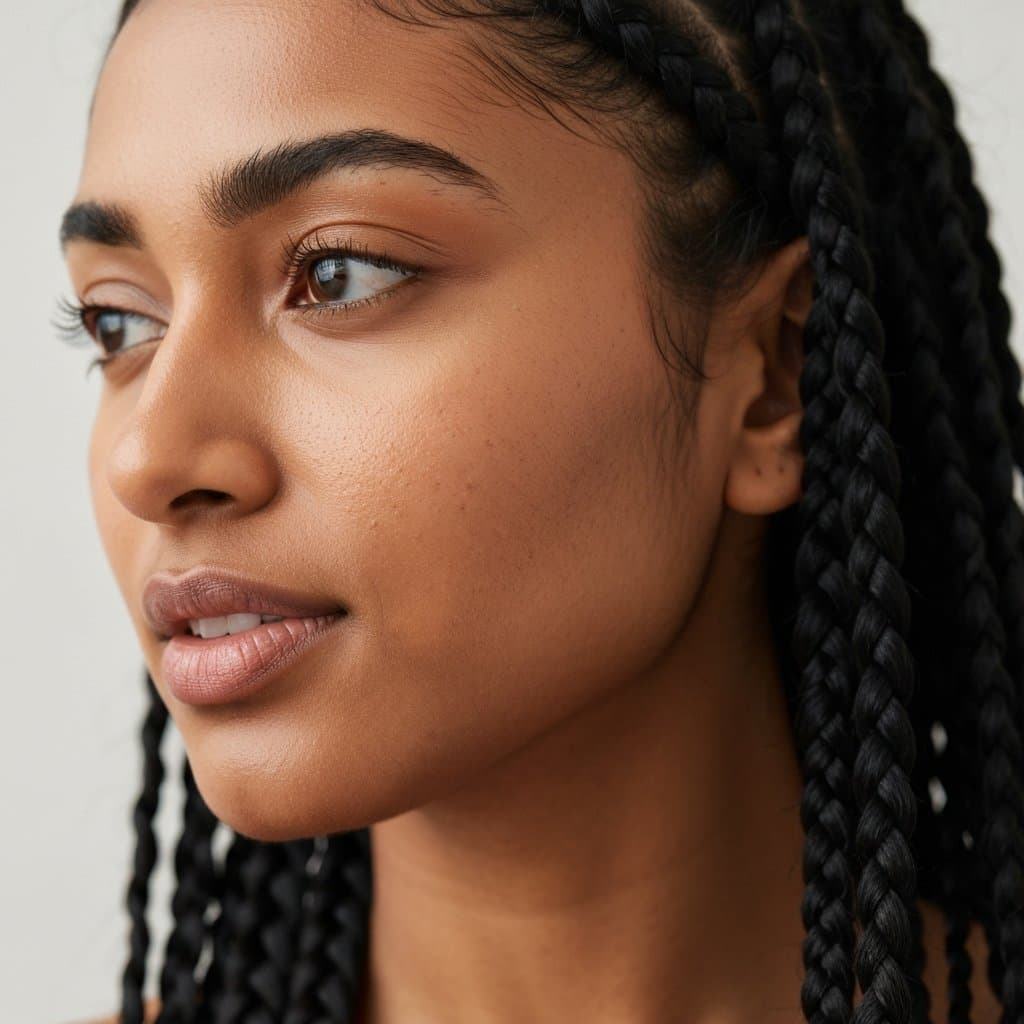Knotless Braids: The Ultimate Guide to This Modern Protective Style | Benefits & Care
The Rise of the Knotless Braid: A Revolution in Protective Styling
The world of hair braiding is constantly evolving, with stylists and clients alike seeking techniques that are not only beautiful but also promote hair health. For decades, traditional box braids have been a go-to protective style, celebrated for their longevity and versatility. However, a modern alternative has taken the industry by storm, offering a revolutionary approach to braiding: the knotless braid. This innovative technique eliminates the tension-heavy knot at the base of the braid, creating a style that is lighter, more comfortable, and gentler on the scalp from the very first day. It's a game-changer for anyone who loves the look of braids but dreads the initial tightness and potential for scalp stress.
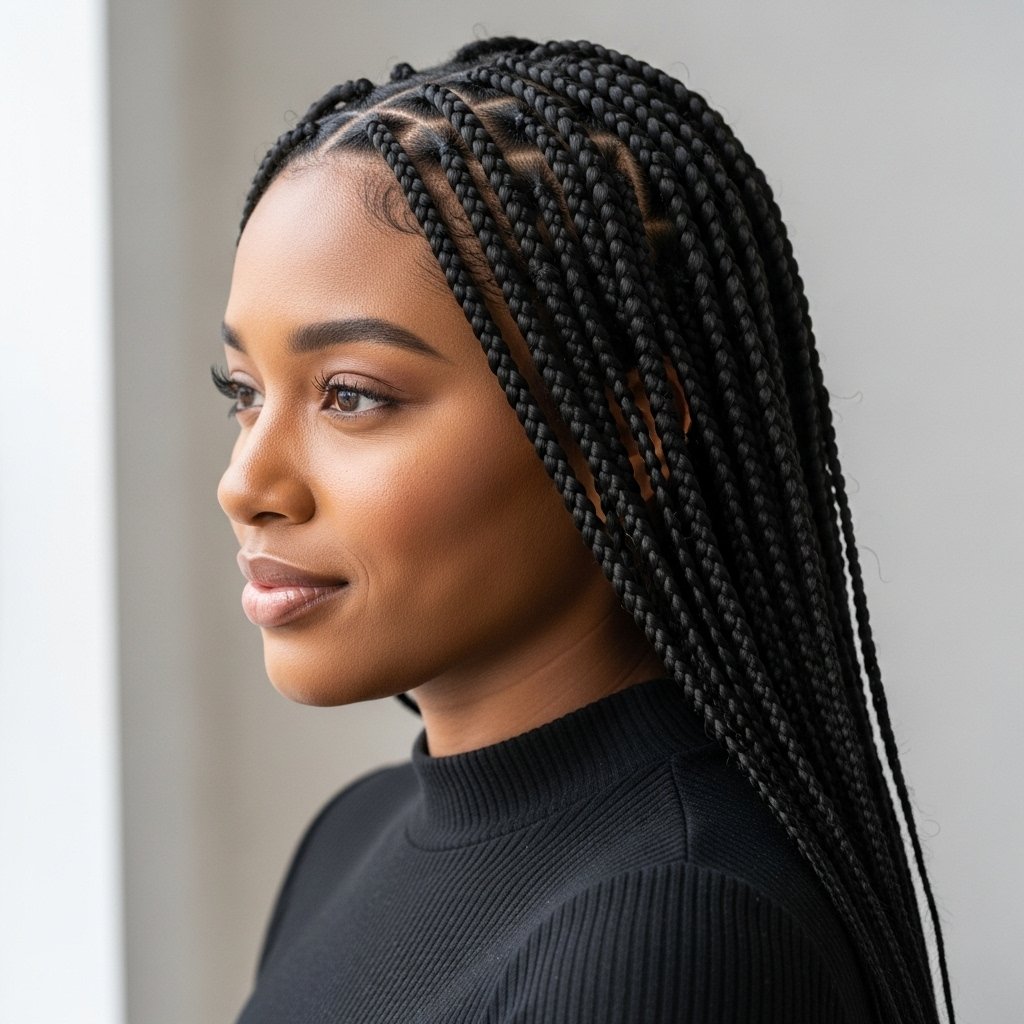
Unlike their traditional counterparts, knotless braids begin with your natural hair and gradually feed in braiding hair as the plait moves down the hair shaft. This method results in a braid that lies flat against the scalp, offering a seamless, natural-looking finish that is immediately flexible. The absence of the bulky starter knot not only enhances comfort but also significantly reduces the risk of traction alopecia, a form of hair loss caused by persistent pulling on the hair follicles. As more people prioritize the health of their hair and scalp, the knotless braid has rightfully earned its place as a top-tier protective style, blending timeless elegance with modern, health-conscious techniques.
This comprehensive guide will delve into everything you need to know about the knotless braid. We'll explore its unique installation process, compare it to traditional box braids, outline the extensive benefits, and provide expert advice on preparation, maintenance, and styling. Whether you're a seasoned braid enthusiast or considering them for the first time, understanding the nuances of this style will empower you to make the best choice for your hair's health and beauty.
What Exactly Are Knotless Braids? The Feed-In Revolution
The magic of the knotless braid lies in its installation technique. The core difference is the start of the braid. Traditional box braids begin by wrapping a piece of braiding hair around a section of natural hair at the root, creating a small but tight knot to anchor the extension. This knot is the primary source of the tension, pulling, and initial stiffness associated with classic box braids. For many, this can lead to discomfort, headaches, and even bumps along the hairline for the first few days.
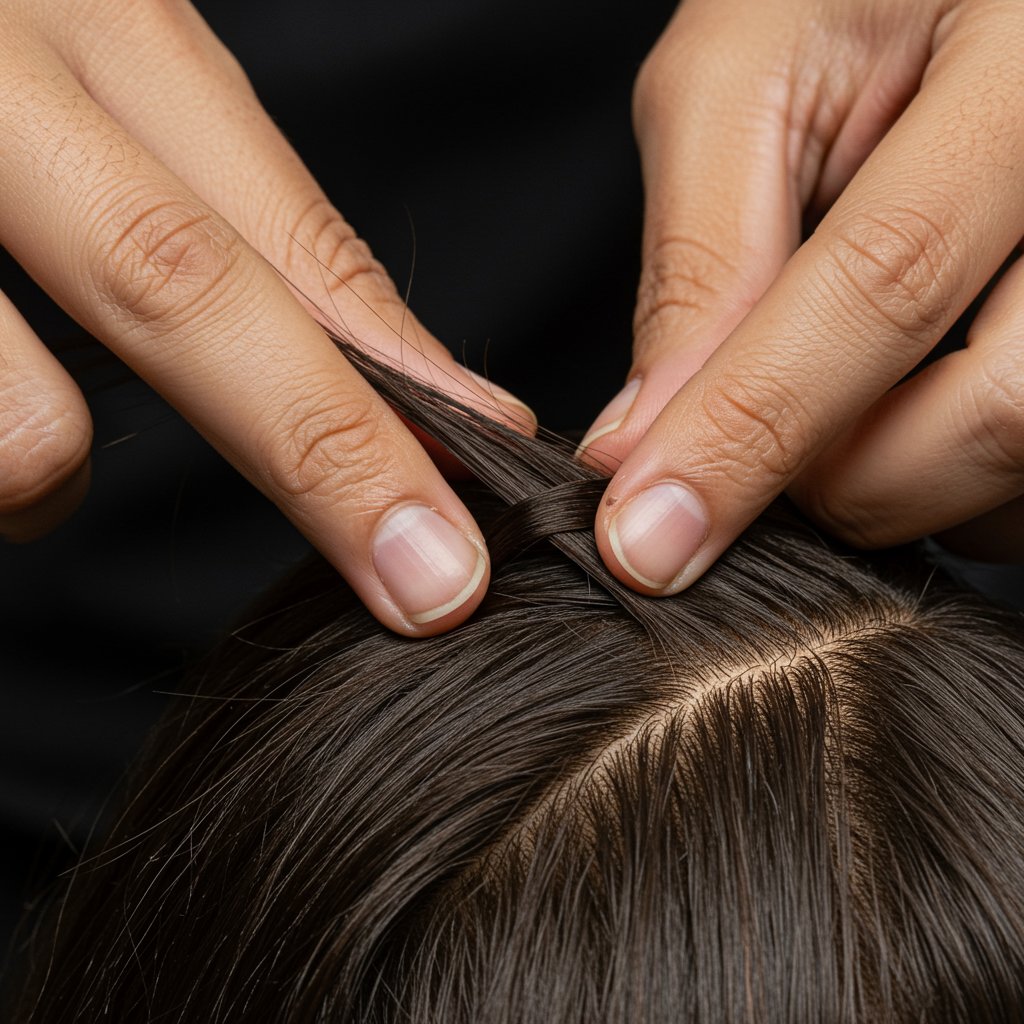
The knotless braid, however, completely reimagines this starting point. A stylist begins the braid using only your natural hair, just as if they were creating a simple plait or cornrow. After braiding for a few stitches, they begin to seamlessly 'feed in' small pieces of braiding hair into the plait. This feed-in method continues down the length of the braid, gradually adding hair to achieve the desired thickness and length. The result is a smooth transition from your natural hair to the extension, with no visible knot and no concentrated tension point at the scalp.
This revolutionary approach is why knotless braids are celebrated for their comfort and scalp-friendly nature. The tension is distributed evenly along the braid rather than being focused at the root, which allows for immediate flexibility and movement. You can pull your hair into a ponytail or bun on the same day as your appointment without the usual pain or stiffness. This method not only feels better but also looks incredibly natural, as the base of the braid blends flawlessly with your scalp, creating a look that appears to be growing directly from it.
The Unbeatable Benefits: Why Everyone is Choosing Knotless
The surge in popularity for knotless braids isn't just a fleeting trend; it's driven by a host of tangible benefits that prioritize both aesthetics and hair health. Clients and stylists alike champion this method for its superior comfort and protective qualities.
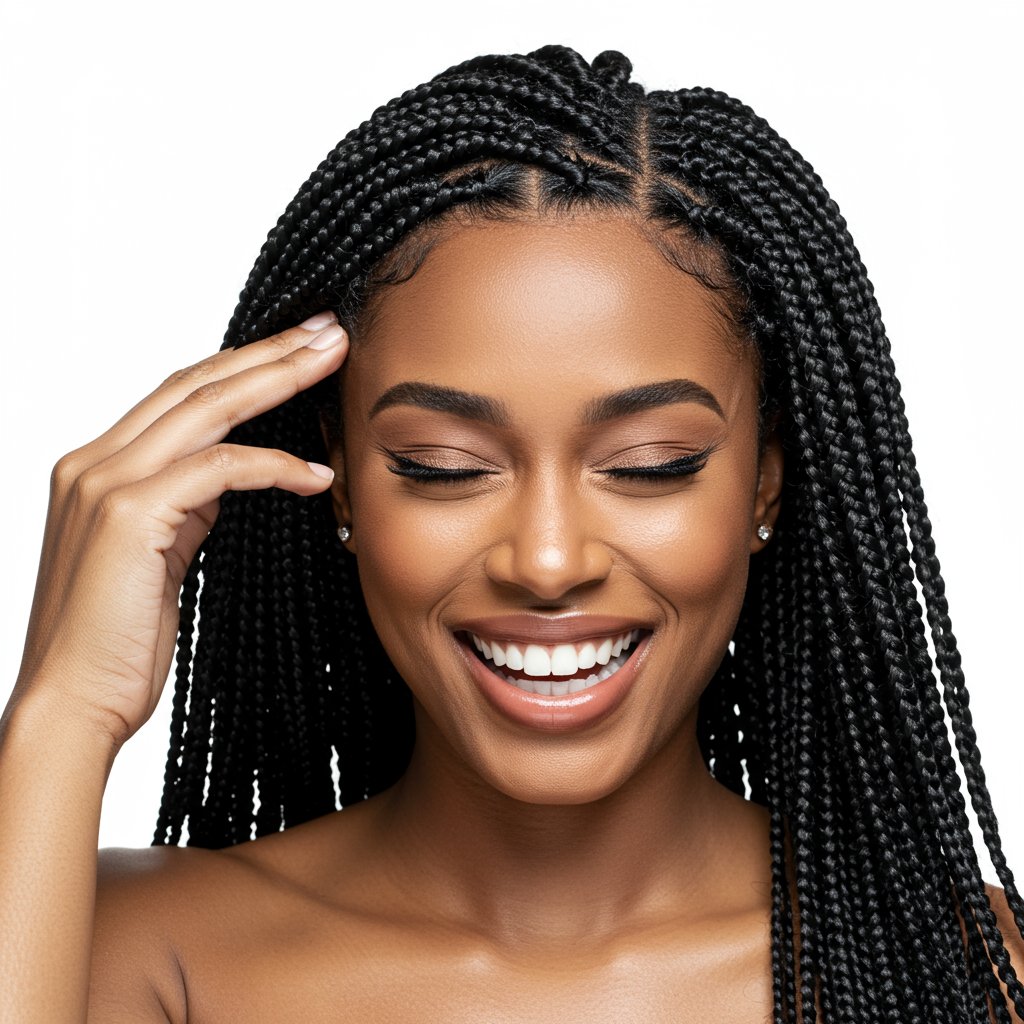
Less Tension, More Comfort: Protecting Your Scalp
This is arguably the most significant advantage. The elimination of the starter knot drastically reduces the pulling force on your hair follicles. This means less risk of scalp irritation, inflammation, and the dreaded traction alopecia. For individuals with sensitive scalps or fine hair, this feature makes braided styles accessible and enjoyable without the painful side effects. The lightweight feel also contributes to overall comfort, making it easy to forget you're even wearing extensions.A Natural, Flatter Lie: Seamless Style
The aesthetic of knotless braids is sleek and refined. Because they start with your natural hair and lie flat against the scalp, they offer a more organic and less bulky appearance than traditional braids. This seamless integration allows for unparalleled styling versatility from day one. High ponytails, elegant updos, and half-up styles look polished and chic without the tell-tale bumps of knots at the base. This natural look is a key reason why they are so sought after for both everyday wear and special occasions.Lightweight and Flexible: Effortless Movement
Traditional box braids can feel heavy, especially when long or thick, due to the concentration of extension hair at the root. Knotless braids distribute this weight more evenly down the hair shaft. This, combined with the lack of a stiff knot, results in a style that is incredibly lightweight and flexible. The braids move and flow naturally, mimicking the movement of one's own hair and allowing for immediate, pain-free styling.Knotless vs. Traditional Box Braids: A Side-by-Side Comparison
To truly understand the innovation of knotless braids, it's helpful to compare them directly with their classic predecessor, the traditional box braid. While both are excellent protective styles, they offer different experiences.
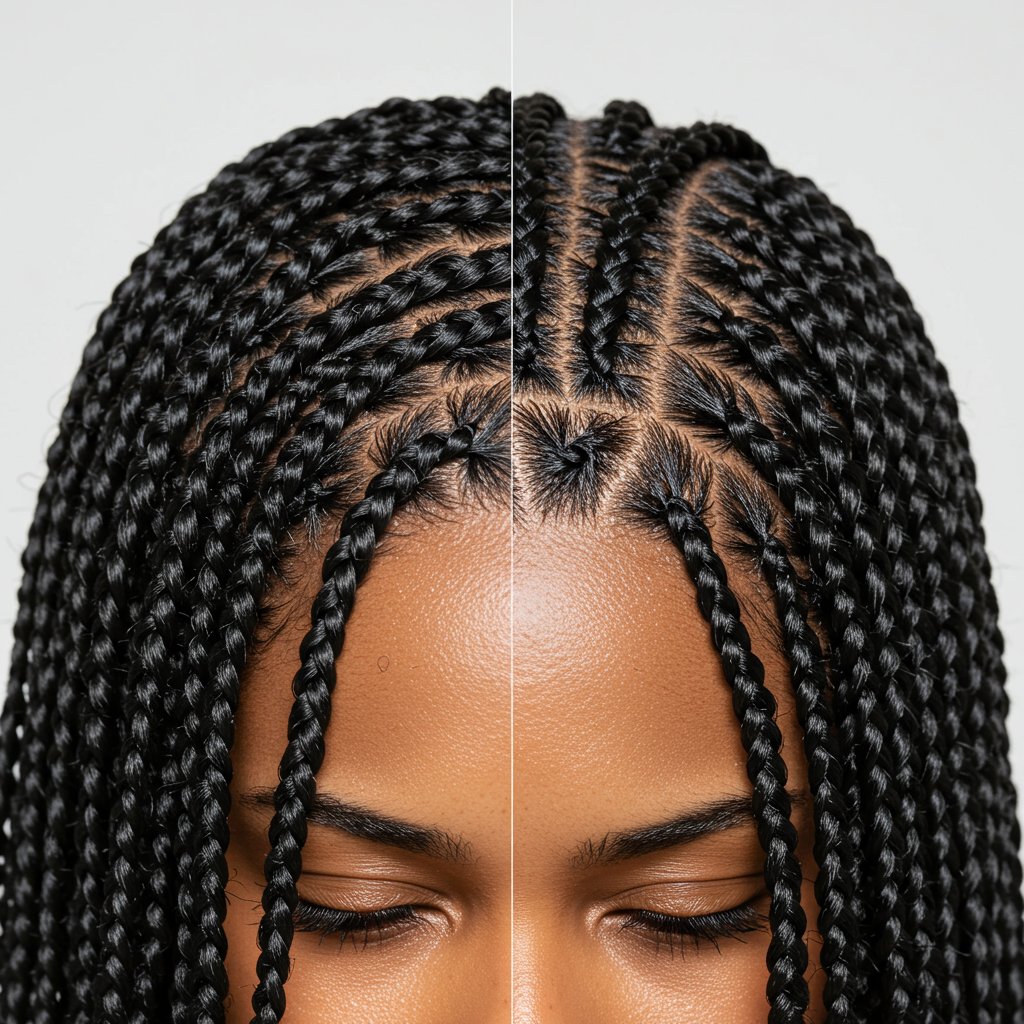
| Feature | Knotless Braids | Traditional Box Braids | |---------------------|------------------------------------------------------------------------------|------------------------------------------------------------------------------| | Installation | Begins with natural hair; extensions are fed in gradually. Takes longer. | Begins with a knot of extension hair wrapped at the root. Generally faster. | | Tension Level | Very low. Tension is distributed evenly, minimizing scalp stress. | High at the root. Can cause initial pain, soreness, and risk of traction alopecia. | | Appearance | Lays flat against the scalp for a seamless, natural look. | Has a small, visible knot at the base of each braid, creating a bulkier start. | | Flexibility | Immediately flexible. Can be styled in updos on day one. | Initially stiff. May take several days before they can be comfortably styled up. | | Weight | Lighter feel due to the gradual addition of hair. | Can feel heavier, especially at the scalp where the extension is anchored. | | Cost | Typically more expensive due to the more intricate and time-consuming process. | Generally more affordable as the installation process is quicker. | | Ideal For | Sensitive scalps, fine hair, those prioritizing scalp health and a natural look. | All hair types, those seeking a classic look and a faster installation time. |
Ultimately, the choice between knotless and traditional braids depends on your personal priorities. If comfort, scalp health, and a natural aesthetic are at the top of your list, knotless braids are the superior option. If you're looking for a more budget-friendly and quicker service, traditional box braids remain a solid choice.
Preparing for Your Knotless Braid Appointment
Proper preparation is the key to a flawless knotless braid installation and the long-term health of your hair. Arriving at the salon with your hair ready for braiding ensures a smoother process and better results. Think of it as creating the perfect canvas for your stylist's artistry.
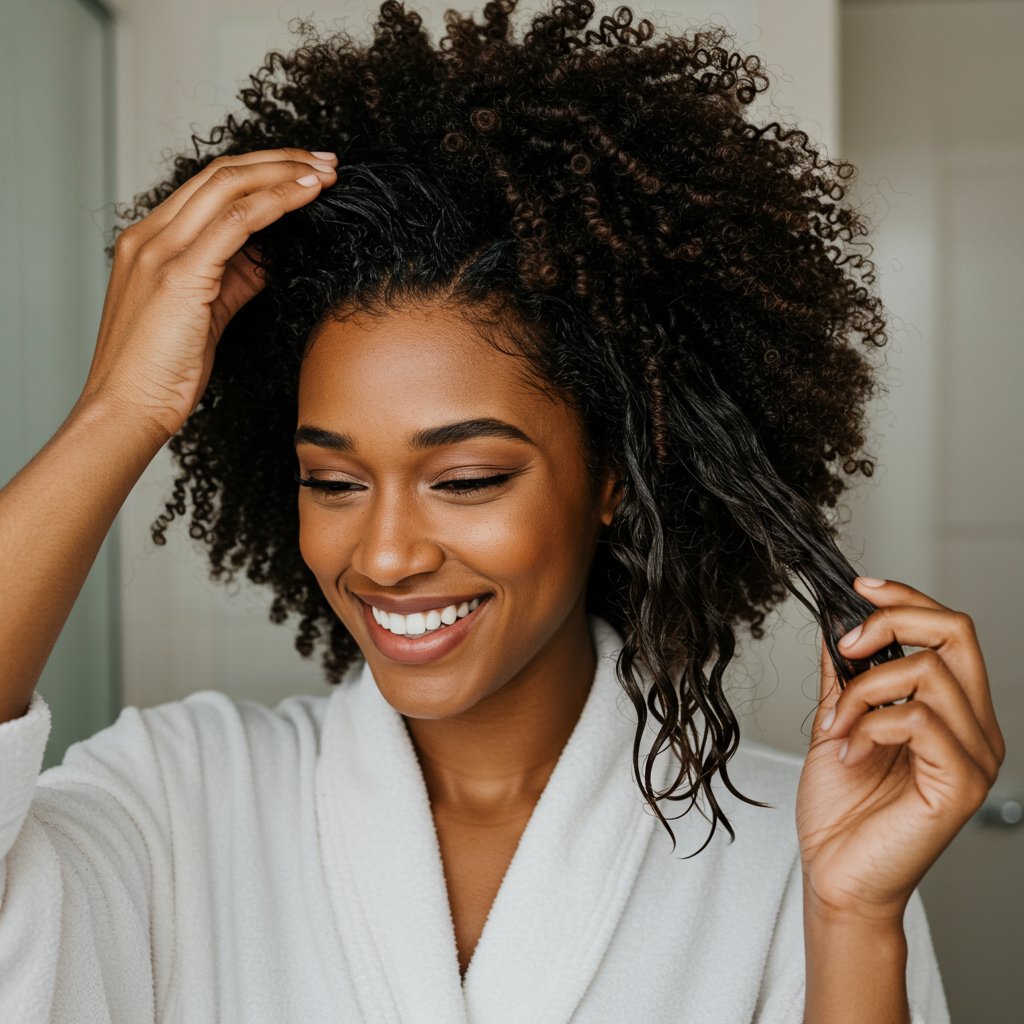
Step 1: Deep Cleansing and Clarifying
Start with a clean slate. A week or a few days before your appointment, wash your hair with a good clarifying shampoo. This will remove any product buildup, dirt, and oil from your hair and scalp. A clean scalp is crucial for a healthy protective style, as it prevents itchiness and flakes from being trapped under the braids. Follow up the clarifying wash with a moisturizing shampoo to restore hydration.Step 2: Deep Conditioning and Moisturizing
Your hair is about to be tucked away for several weeks, so infusing it with moisture is non-negotiable. After cleansing, apply a rich, deep conditioner or a hair mask. Focus on the ends, which are the oldest and most fragile part of your hair. For an extra boost, use a steamer or cover your hair with a plastic cap and sit under a hooded dryer for 20-30 minutes. This helps the conditioner penetrate the hair shaft more effectively, leaving it soft, supple, and resilient.Step 3: Detangling and Stretching
Thoroughly detangled hair is essential for a pain-free and efficient braiding process. After conditioning, work in sections to gently detangle your hair using your fingers or a wide-tooth comb. Once detangled, it's highly recommended to stretch your hair. This can be done by blow-drying on a low to medium heat setting or by using heatless methods like banding or African threading. Stretched hair prevents tangles during parting and allows the stylist to grip the hair cleanly, resulting in neater, more uniform braids.The Knotless Braid Installation Process: What to Expect
Understanding the installation process can help you appreciate the skill involved and know what to expect during your salon visit. While time-consuming, the meticulous technique is what makes knotless braids so unique.
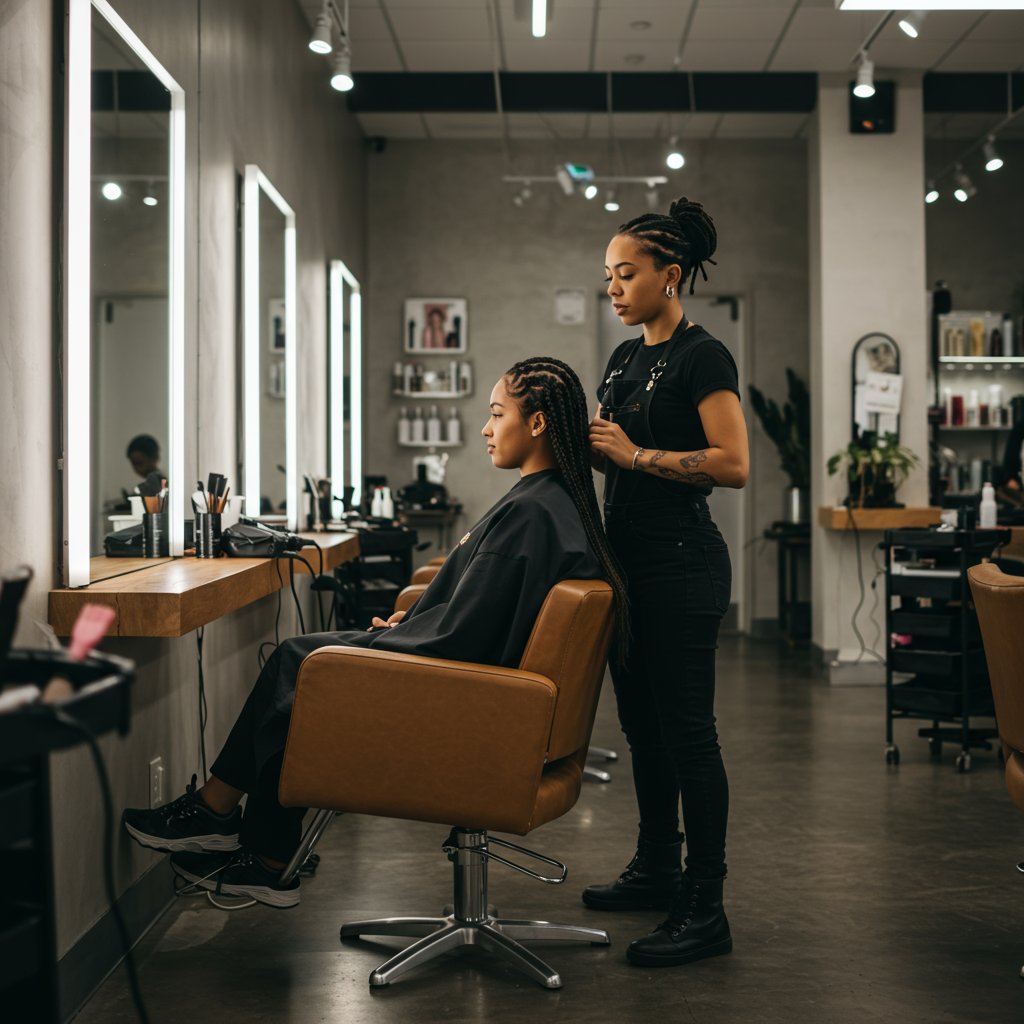
First, your stylist will begin by parting your hair with precision. The size of the parts will determine the size of your braids—from small, micro braids to large, jumbo ones. Clean, sharp parts are the foundation of a neat and professional-looking style. A good stylist will use a quality parting comb and possibly some light edge control or gel to make the parts crisp.
Next, for each section, the braiding begins. The stylist will take the small section of your natural hair and start a standard three-strand plait. After two to three links of the plait, they will expertly begin the feed-in process. With incredible dexterity, they will add a very small piece of pre-stretched braiding hair into one of the strands. They continue this process, adding progressively larger pieces of hair every few links, until the desired braid thickness is achieved. This gradual addition is what creates the flat, seamless base.
This process is repeated meticulously across your entire head, a testament to the stylist's patience and skill. Once the desired length is reached, the ends of the braids are sealed. The most common method is dipping the ends in hot water, which seals the synthetic hair, prevents unraveling, and gives the braids a smooth, finished look. Some clients may also opt for burning the ends (a technique that should only be performed by an experienced professional) or leaving them curly.
Mastering Knotless Braid Maintenance for Longevity
To get the most out of your knotless braids, which typically last four to seven weeks, a consistent maintenance routine is essential. Proper care keeps the style looking fresh, promotes the health of your natural hair underneath, and prevents scalp issues.
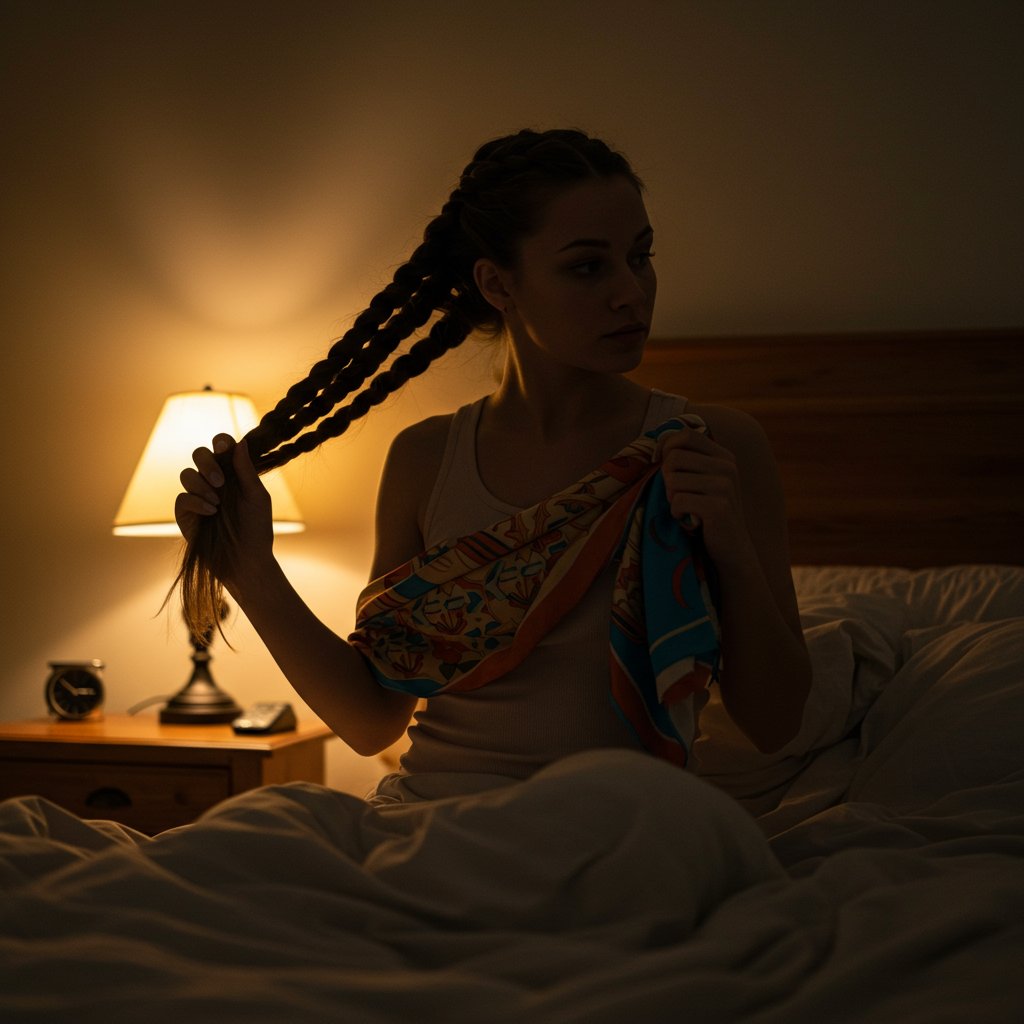
Daily and Nightly Care
Scalp health is paramount. Lightly spritz your scalp and the length of your braids with a leave-in conditioner spray or a braid spray every other day to maintain moisture. You can also apply a light oil, like jojoba or avocado oil, to your scalp to prevent dryness and itchiness, but avoid heavy greases that can cause buildup. At night, always protect your investment. Tie your braids up and cover them with a silk or satin scarf or bonnet. This reduces friction against your pillowcase, which minimizes frizz and protects your edges.A Gentle Washing Routine
Yes, you can and should wash your braids. Aim to wash them every two to three weeks to remove buildup and keep your scalp clean. To do this, dilute your shampoo with water in an applicator bottle. Apply the mixture directly to your scalp, section by section. Gently massage your scalp with the pads of your fingers—never your nails. Let the suds run down the length of the braids, gently squeezing them to clean them. Rinse thoroughly to ensure no product is left behind. Follow up by applying a light, liquid-based leave-in conditioner to your hair and braids to restore moisture. It's best to let your braids air-dry completely to prevent mildew, but you can use a blow dryer on a low, cool setting to dry the roots if needed.Pro Tips for the Perfect Knotless Experience
- Choose the Right Hair: Pre-stretched braiding hair is the best choice for knotless braids. It saves the stylist time and results in a smoother, less bulky finish.
- Communicate with Your Stylist: Be clear about the size and length you want. Don't be afraid to speak up if you feel any pulling or discomfort during the installation.
- Don't Go Too Small: While micro knotless braids are beautiful, extremely small parts can put stress on fine hair strands. Opt for a size that suits your hair density and lifestyle.
- Edge Care is Crucial: Be gentle with your delicate hairline. Avoid pulling your braids into tight, high styles too frequently, and moisturize your edges daily.
- Proper Takedown is Key: When it's time to remove your braids, be patient. Cut the braid below where your natural hair ends, and then use a comb, oil, and conditioner to gently unravel the plait and comb out any shed hair.
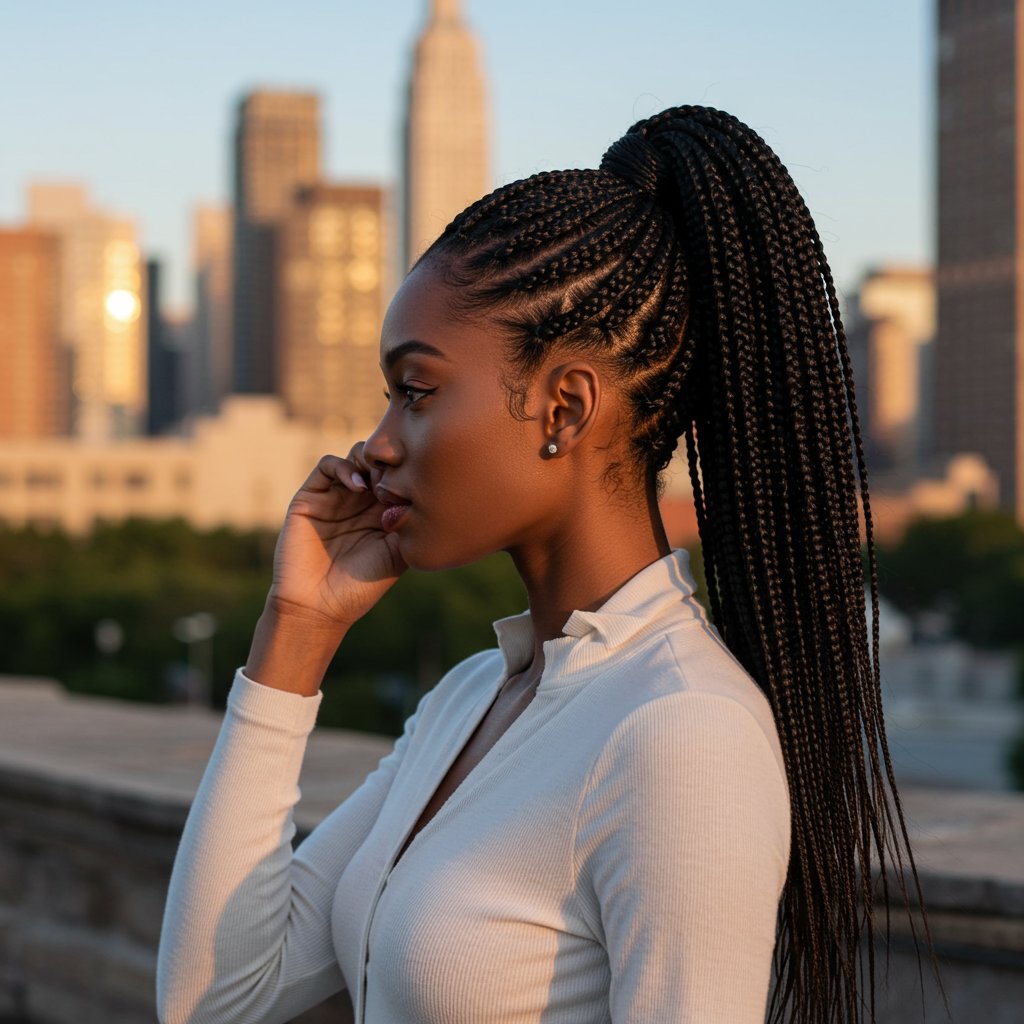
Frequently Asked Questions (FAQ)
Q1: Are knotless braids painful to install?
No, one of their main benefits is that they are virtually painless. Because the process avoids a tight knot at the root and distributes tension evenly, most people find them incredibly comfortable from the moment of installation.Q2: Can I get knotless braids on short hair?
Yes, but you'll need a certain minimum length for the stylist to grip. Generally, at least 2-3 inches of hair is recommended for a secure installation. An experienced stylist can work with shorter lengths, but the style may not last as long.Q3: Do knotless braids cause hair damage?
When installed and maintained correctly, knotless braids are one of the least damaging braided styles. They are designed to be a true protective style that minimizes stress on the follicles. Damage usually occurs from improper installation (braiding too tightly), neglect (not moisturizing), or keeping them in for too long.Q4: How much do knotless braids typically cost?
The cost varies widely based on your location, the stylist's expertise, and the desired size and length of the braids. Because the process is more intricate and time-consuming than traditional braids, they are generally more expensive. Expect to invest in a premium service for a premium style.Q5: What kind of hair is best for knotless braids?
Most stylists prefer to use high-quality, pre-stretched synthetic Kanekalon hair. Brands like X-Pression or Ruwa are popular because they are lightweight, have a texture that blends well with natural hair, and are easy to set with hot water.Q6: How do I safely remove my knotless braids?
To remove them, cut each braid just below where your natural hair ends. Then, saturate the braid with a mix of water, conditioner, and oil to provide slip. Use a rattail comb to gently unravel the braid from the bottom up. Once the extension is out, be prepared to gently detangle the shed hair from each section before washing.Conclusion: Embrace the Future of Braiding
The knotless braid is more than just a hairstyle; it's a testament to the innovation happening within the hair care industry—an innovation that places the health of your hair and scalp at the forefront. By eliminating the tension-causing knot, this technique offers unparalleled comfort, a flawlessly natural appearance, and true protection for your hair.
Its versatility, lightweight feel, and gentle nature have solidified its status as a premier choice for anyone looking to enjoy the beauty of braids without compromise. Whether you have a sensitive scalp, fine hair, or simply desire a more comfortable and modern protective style, knotless braids offer a sophisticated and health-conscious solution. To ensure the best results, always seek out a skilled and experienced stylist who specializes in this meticulous technique, and commit to a proper maintenance routine. By doing so, you can enjoy weeks of beautiful, effortless style while nurturing the health of your natural hair underneath.

